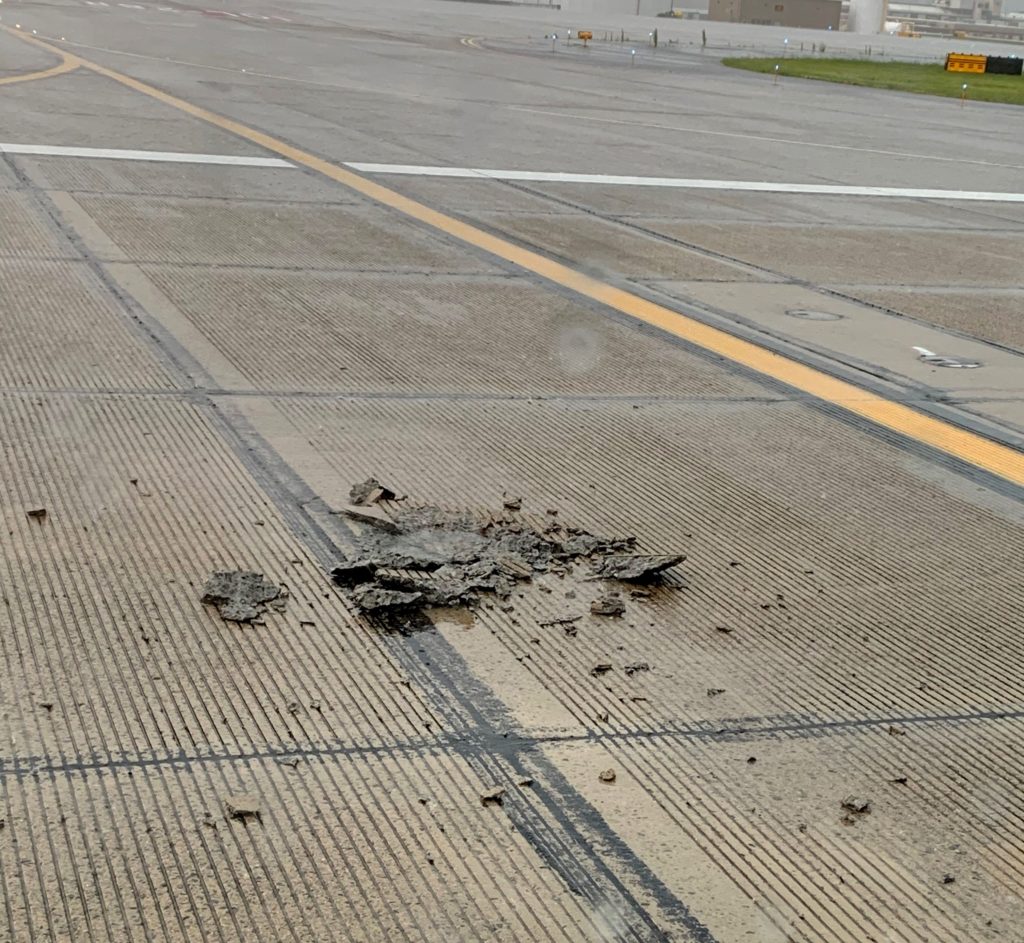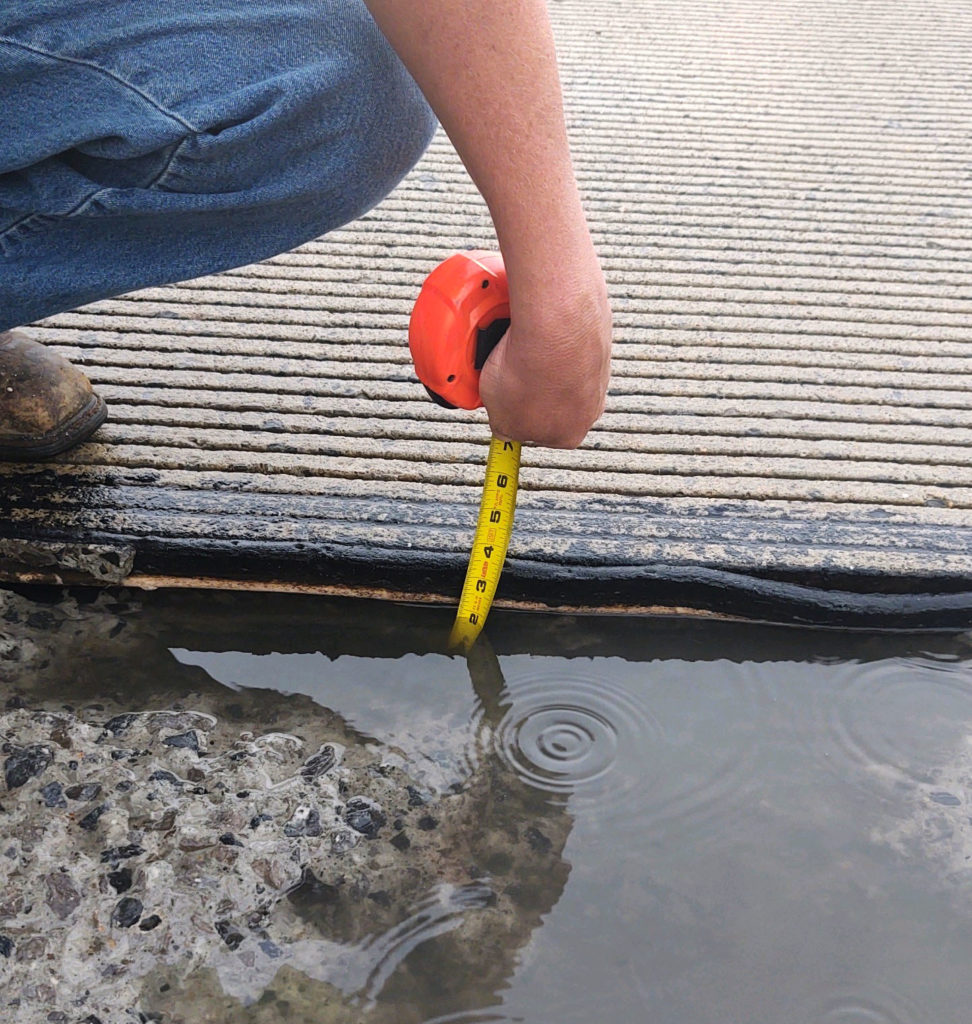Airfield Crews Respond Quickly After Lightning Hits PIT Runway
Unusual strike repaired within hours after severe storm moves over airport
By Jeff Martinelli
Published July 13, 2020
Read Time: 3 mins
A routine airfield inspection scheduled for the afternoon of July 7 at Pittsburgh International Airport quickly turned into a severe weather inspection after heavy storms began battering the area.
Severe thunderstorm and flash flood warnings were issued for parts of southwestern Pennsylvania that day, including western Allegheny County, where PIT is located. The storm brought 60-mph wind gusts and even small hail, while more than two inches of rain fell in some areas in a matter of hours.
“Typically, during a storm you can see the lightning hitting all around,” said Airport Operations Duty Manager Trudi Biedrzycki. “We make a point to do an inspection during storms to make sure no damage has occurred.”
While the much-needed rainfall briefly cooled the region after an extended period of 90-degree days, airport employees always exercise caution when late-day severe thunderstorms hit the area, a frequent occurrence in summer.
“It was pouring down rain,” Biedrzycki said. “The rain was so hard, and there was lots of very intense lightning—very intense.”
The July 7 storm was severe enough to activate the airport’s lightning safety system, including halting tugs transporting baggage. Passengers were letting the airport know about the delays they were experiencing through social media.
“Open up the ramps,” said one Facebook message. “Been sitting on tarmac for 2 hours waiting to get in.”
About the time that message arrived, Biedrzycki and a co-worker saw what she described as a “big thick lightning bolt” strike in the direction of runway 10L/28R. Although they suspected a strike occurred, the pair was still surprised at what they saw when they arrived: a 3-by-3 foot hole in the runway, about 3 inches deep.

The lightning strike resulted in a 3-by-3 foot hole in the runway. (Photo credit: PIT Airport Operations staff)
“That’s not typical,” Biedrzycki said. “I’ve never seen lightning hit a runway, on the concrete. I have seen lightning strikes on the ramp … If lightning is going to strike, it would be more likely to strike ramp, where the gates and equipment are, more so than anywhere else.”

Crews inspected the damage and then quickly began work to repair the runway. (Photo credit: PIT Airport Operations staff)
Biedrzycki called the maintenance staff to close the runway, which wasn’t being used at the time. The hole was repaired and the runway was ready for use the next morning.
How lightning alerts work
Pittsburgh International’s Operations Department uses a three-stage lightning safety system, notifying airlines, ground handlers and anyone with ground operation duties when lightning is within 17 miles, when it moves to within five miles, and when it has cleared the area.
The system alerts all airfield users that the airport is in Lightning Condition Yellow at the 17-mile radius, advising all to use caution and that severe weather is most likely imminent. The airside terminal also has flashing beacons outside to indicate the current lightning condition.
When lightning is within five miles, the airport moves to Lightning Condition Red. Fueling is prohibited and all airport employees are required to seek shelter in their vehicles or in the nearest building. Under Condition Red, any tugs moving from the jetway to baggage claim must wait for the storm to blow over and the lightning stops.
Only when the storm is over and lightning is not spotted does the airport declare Lightning Condition Clear, allowing ground operations—including unloading baggage—to resume.
“We understand the inconvenience for passengers,” said Patrick Carreno, Vice President of Airfield Operations. “But safety of our customers and employees is our top priority.”
In this case, the storm hung over the airport for a while, moving the situation from Lightning Condition Yellow to Condition Red and back to Yellow over several periods. At times, Biedrzycki said there were eight to 10 airplanes on hold waiting to get to the gates.
”As soon as the airline crews saw yellow flashing, they got things moving,” she said. “But those Condition Yellows only lasted five to 10 minutes. They did a great job with getting them in.”
Watch
This Next
Read
This Next





